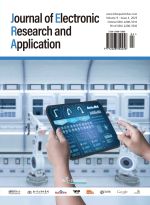Detecting Drowsiness Behind the Wheel: A Lightweight Approach Based on Eye and Mouth Aspect Ratios
Abstract
Driver distraction is a leading cause of traffic accidents, with fatigue being a significant contributor. This paper introduces a novel method for detecting driver distraction by analyzing facial features using machine deep learning and 68 face model. The proposed system assesses driver tiredness by measuring the distance between key facial landmarks, such as the distance between the eyes and the angle of the mouth, to evaluate signs of drowsiness or disengagement. Real-time video feed analysis allows for continuous monitoring of the driver’s face, enabling the system to detect behavioral cues associated with distraction, such as eye closures or changes in facial expressions. The effectiveness of this method is demonstrated through a series of experiments on a dataset of driver videos, which proves that the approach can accurately assess tiredness and distraction levels under various driving conditions. By focusing on facial landmarks, the system is computationally efficient and capable of operating in real-time, making it a practical solution for in-vehicle safety systems. This paper discusses the system’s performance, limitations, and potential for future enhancements, including integration with other in-vehicle technologies to provide comprehensive driver monitoring.
References
Abtahi S, Omidyeganeh M, Shirmohammadi S, et al., 2014, Yawning Detection Using Embedded Smart Cameras. IEEE Transactions on Instrumentation and Measurement, 63(7): 1842–1854.
Teletrac Navman, n.d., What Is Driver Fatigue? viewed April 13, 2025, https://www.teletracnavman.com/fleet-management-software/safety/resources/what-is-driver-fatigue
Sprajcer M, Dawson D, Kosmadopoulos A, et al., 2023, How Tired Is Too Tired to Drive? A Systematic Review Assessing the Use of Prior Sleep Duration to Detect Driving Impairment. Nature and Science of Sleep, 15: 175–206.
Mollahosseini A, Hasani B, Mahoor MH., 2017, AffectNet: A Database for Facial Expression, Valence, and Arousal Computing in the Wild. IEEE Transactions on Affective Computing, 10(1): 18–31.
Li D, Zhang X, Liu X, et al., 2023, Driver Fatigue Detection Based on Comprehensive Facial Features and Gated Recurrent Unit. J Real-Time Image Proc, 20(19).
Kollias D, Schulc A, Hajiyev E, et al., 2021, Deep Affect Prediction In-the-Wild: Aff-Wild Database and Challenge. IEEE Transactions on Affective Computing.
Abtahi S, Omidyeganeh M, Shirmohammadi S, et al., 2014, Yawning Detection Using Embedded Smart Cameras. IEEE Transactions on Instrumentation and Measurement, 63(7): 1842–1854.
Dwivedi R, Biswas D, Chakraborty S, 2014, Real-Time Driver Drowsiness Detection Using Computer Vision. International Journal of Computer Applications, 103(10): 36–39.
Buolamwini J, Gebru T, 2018, Gender Shades: Intersectional Accuracy Disparities in Commercial Gender Classification. Proceedings of Machine Learning Research, 81: 1–15.
Wierwille WW, Ellsworth LA, 1994, Research on Vehicle-Based Driver Status/Performance Monitoring: Development, Validation, and Refinement of Algorithms for Detection of Driver Drowsiness. National Highway Traffic Safety Administration.
Dinges DF, Mallis MM, Maislin G, et al., 1998, PERCLOS: A Valid Psychophysiological Measure of Alertness as Assessed by Psychomotor Vigilance. U.S. Department of Transportation, Federal Highway Administration.
Zhao Y, Zheng Y, Zhang Y, 2021, Wearable EEG-Based Drowsiness Detection Using Convolutional Neural Networks. Sensors, 21(3): 926.
Sikander G, Anwar S, 2019, Driver Fatigue Detection Systems: A Review. IEEE Transactions on Intelligent Transportation Systems, 20(6): 2339–2352.
Albadawi Y, Takruri M, Awad M, 2022, A Review of Recent Developments in Driver Drowsiness Detection Systems. Sensors, 22(5): 2069.
Corneanu CA, Simn MO, Cohn JF, et al., 2016. Survey on RGB, 3D, Thermal, and Multimodal Approaches for Facial Expression Recognition. IEEE Transactions on Pattern Analysis and Machine Intelligence, 38(8): 1548–1568.

